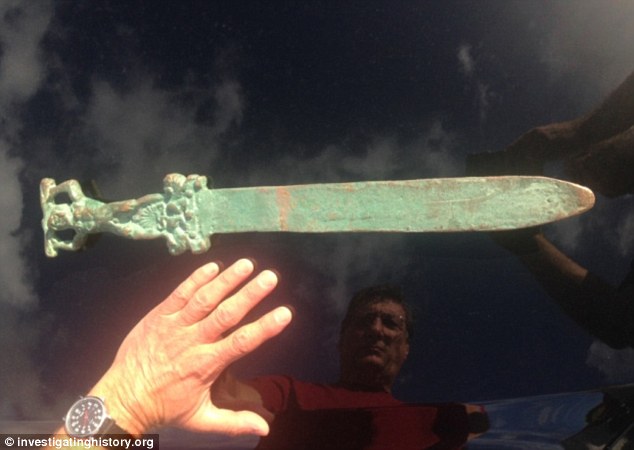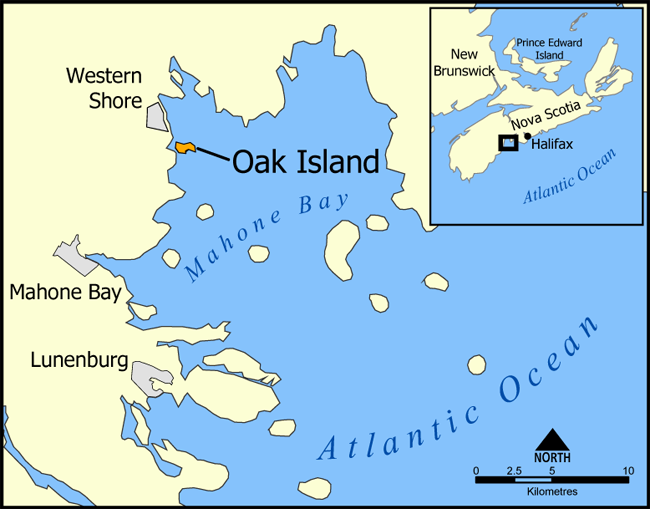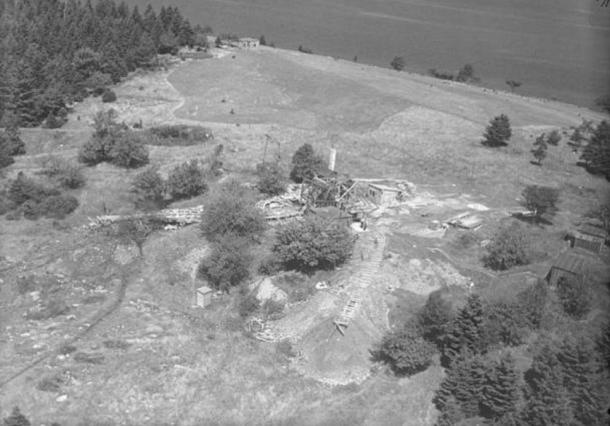Researchers recently made one of the most interesting discoveries yet. While on a site in Oak Island, dubbed one of the most mysterious shores in Nova Scotia, they found a ceremonial sword and a possible shipwreck. After a detailed inspection, it appears that the sword and shipwreck were Roman. This opened up a whole new slant on history as it lends proof to the theory that ancient mariners visited North America thousands of years before Columbus did. This discovery will significantly change what North American historians have been taught.
Two brothers from Michigan knew there were stories about ancient artifacts hidden on the mysterious shore, which is why they made the trek up to Oak Island in the first place. Little did they know that they’d find a large artifact.
One of the lead researchers, J. Hutton Pulitzer, has said that the boys have officially confirmed his theory on the site. His theory was that the Roman sword and ship will change our concept of history, but sadly, the first reporting of the sword was never documented. When a man and his son were scalloping off the coast, their boat brought up the Roman sword. Due to the fact that Nova Scotia protects its shipwrecks, along with any treasure in them, the man and son never came forward about it. The man ended up keeping the sword for decades; after he died it went to his wife. After the wife died the sword went to their daughter, and after the daughter died it went to her husband. Finally, the husband came clean and told researchers where it had been found.

After studying the sword, Pulitzer believes that it’s completely authentic, as its properties match others that have been found. To prove his theory he used an XRF analyzer, which tests metals. After the test, the sword was found to have been made of ore that came directly from the ground and had tested for arsenic and lead in it.
Only the sword has been researched and investigated. The shipwreck hasn’t ever been touched since its discovery. There are reports suggesting that there are thousands of shipwrecks just in Nova Scotia, a majority of those belonging to the 18th and 19th centuries. Many people want to know what else could be lurking in those waters around the island.

Pulitzer said that the only thing done with the shipwreck was that it’s been scanned to document its exact location. The reason they have not been excavating the ship is that there are strict government laws protecting it. Pulitzer said that although he and his team believe that the ship is Roman, they won’t be able to confirm that until they get in the water and really look at it.
Pulitzer believes that the discovery of the ship will be a wake-up call. However, he said many experts will try to do anything to shrug off the finding; making up excuses so they do not have to admit that history is wrong again. He said they will even come up with an excuse such as that a collector dropped the sword in that exact area, confusing many people. It will be hard for many experts and civilians to admit this possibility.
He seemed to shrug off the possibility that it could have been a collector’s item. He said that since the shipwreck is only 25 feet deep; someone could have easily retrieved the sword if it was, indeed, a collector’s item.
Pulitzer wants to prove that he is right, so he had his team go up to Nova Scotia with him to seek out the indigenous natives who still live there. They are called the Mi’kmaq people and have lived throughout Nova Scotia for nearly 8,000 years. They actually carry some of the rarest DNA, which suggests that they come from the Levant in the eastern Mediterranean.
What Pulitzer really wanted to look at was the ancient cave and boulder drawings. What he and his team found were some drawings that could depict the Romans. There were pictures of what they believed were Roman legionaries with swords.
He also found out that in the Mi’kmaq language there are 50 words that describe ancient nautical sailing. He and his team believe that the words were actually from Roman times – since the Mi’kmaq were not a seafaring culture they had to have been influenced by foreign visitors.

Another interesting factor is that on Oak Island there is a certain bush that Nova Scotia considers an invasive species. It is Berberis Vulgaris and is known to have been used by the ancient mariners, as well as by the Romans, to season food and fight scurvy. Many team members believe these two factors prove to be more than coincidence.
The more Pulitzer and his researchers spent on the island, the more they found. In a way, Pulitzer proved it’s true that the island is mysterious. He and his team found two carved stones that he believed had an ancient language on them that was probably from the Levant.
However, there are other past discoveries that go hand-in-hand with the newest discoveries. One of these happened in 1901 when a Roman legionnaire’s whistle was found and unearthed in Nova Scotia. Then in the 1800s, there was a metal boss that appeared to be from the center of a Roman shield. There was also a small Roman sculpture found in Mexico City in 1933, suggesting that the Romans could have traveled there. It was found under a pre-colonial building which was dated between the years of 1476 and 1510.
Pulitzer said that it is time these findings are taken seriously and not just dismissed as coincidence. There are too many things that suggest otherwise that need to be looked into.